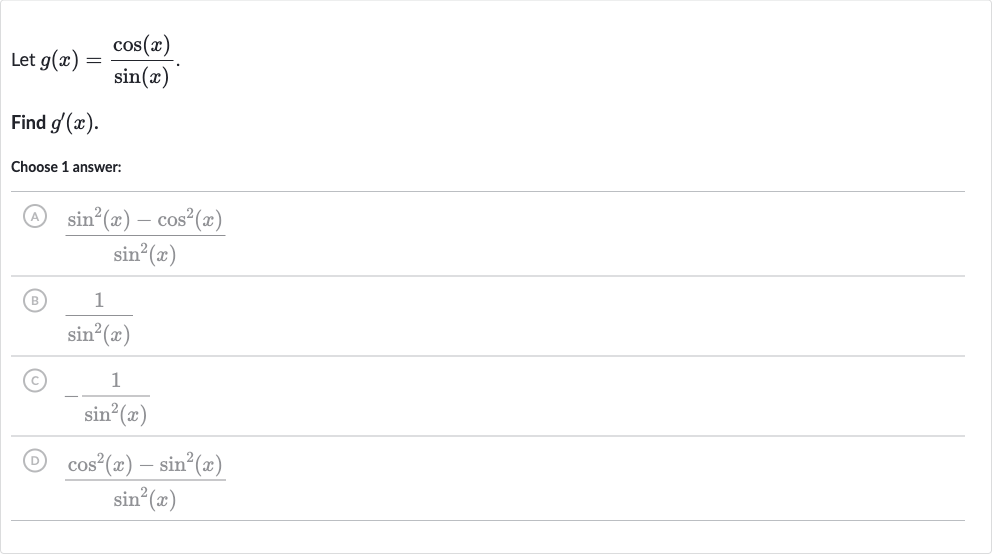AI tutor
Full solution
Q. Let .Find .Choose answer:(A) (B) (C) (D)
- Recognize Quotient Rule: Recognize that is a quotient of two functions, so we will use the quotient rule to find its derivative. The quotient rule states that if , then .
- Identify Functions: Identify the functions and where and . We will need to find the derivatives and .
- Find : Find the derivative of . The derivative of with respect to is . So, .
- Find : Find the derivative of . The derivative of with respect to is . So, .
- Apply Quotient Rule: Apply the quotient rule. Using the derivatives from steps and , we get: .
- Simplify Expression: Simplify the expression. We can use the Pythagorean identity to simplify the numerator:
- Recognize Final Answer: Recognize that is the same as , which matches answer choice .

